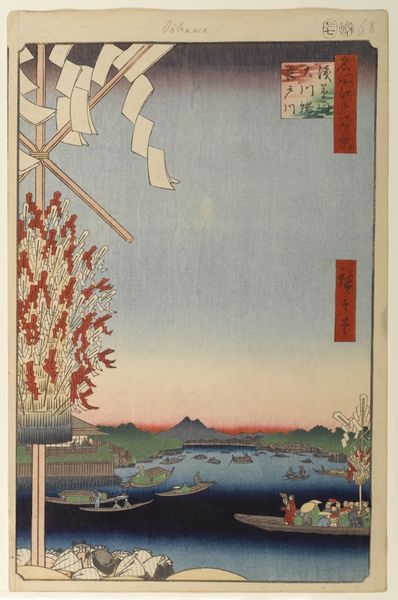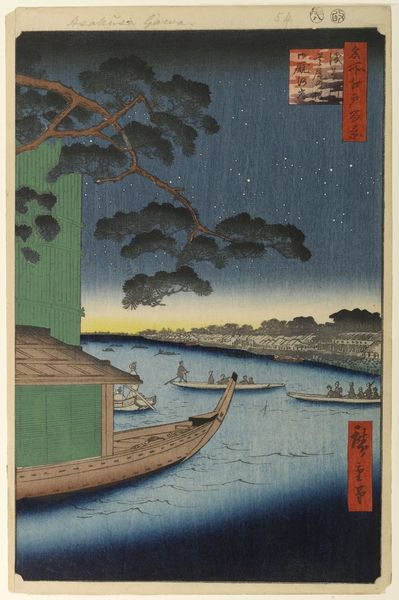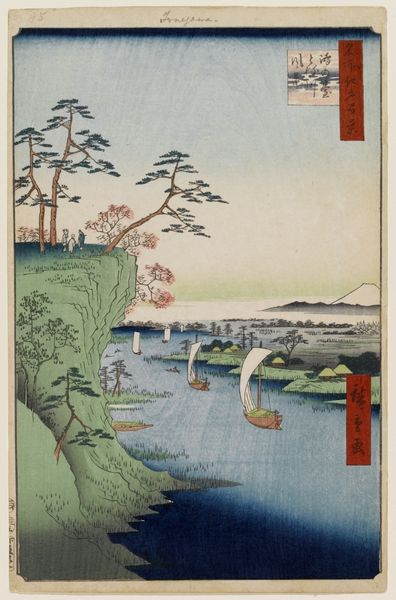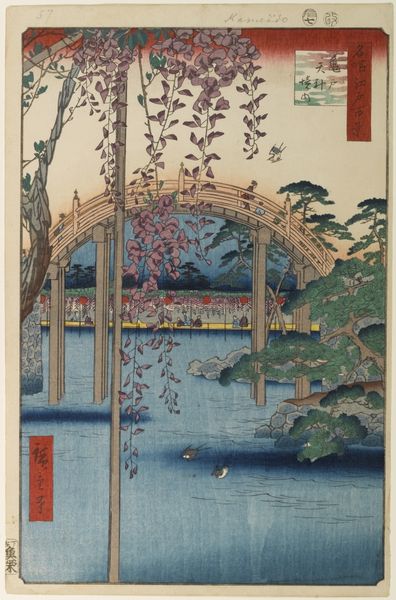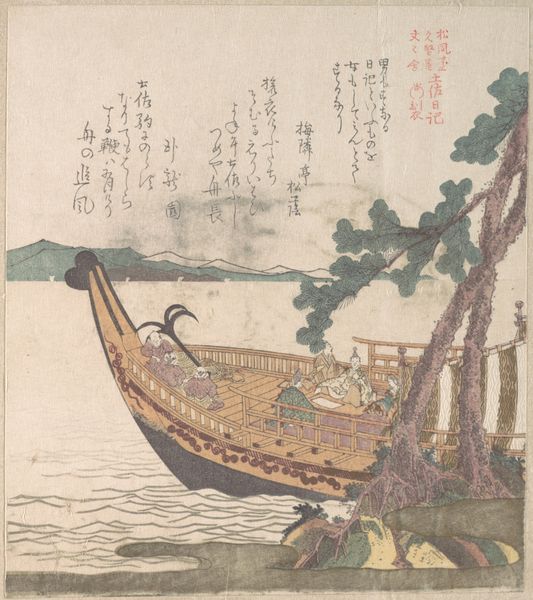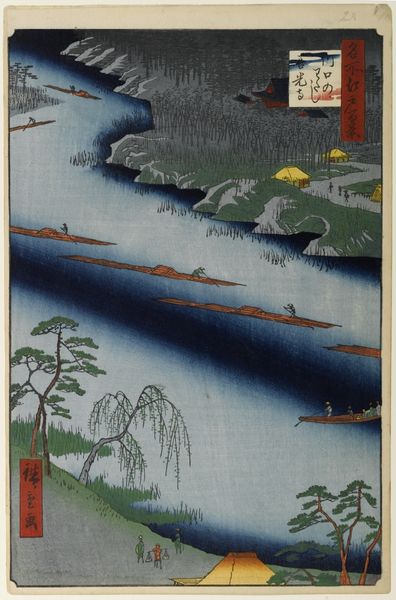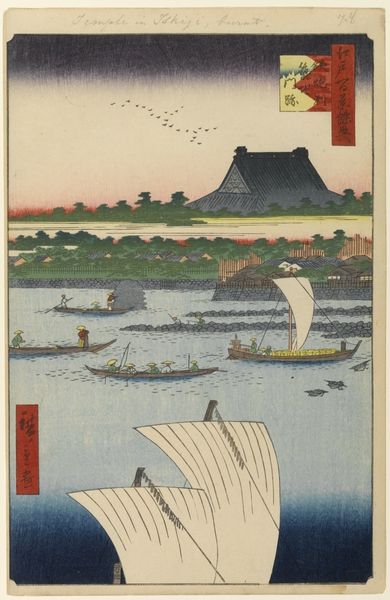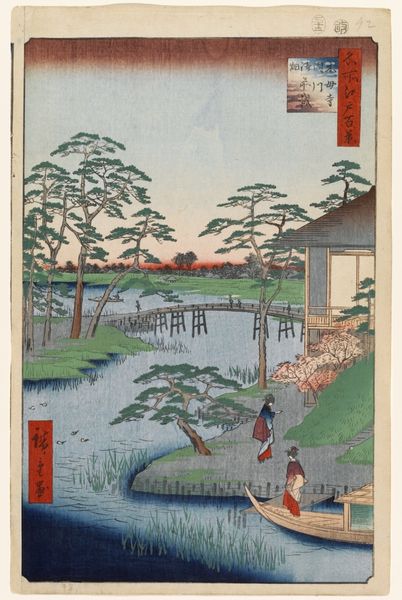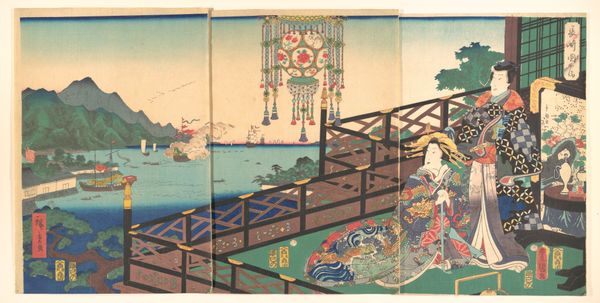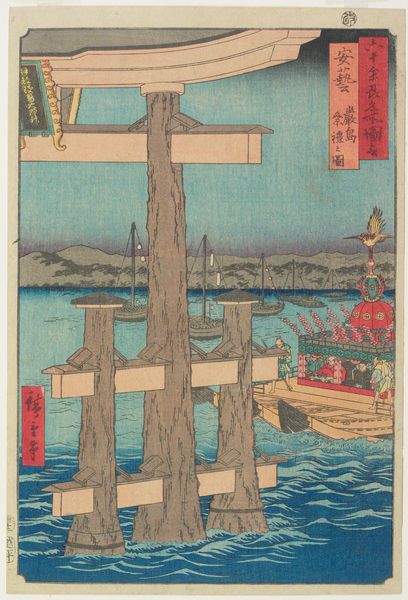
Copyright: Public domain
Utagawa Hiroshige created this woodblock print around 1857 as part of his series *One Hundred Famous Views of Edo*. It offers us a peek into the daily life and landscape of 19th-century Edo, now Tokyo. Hiroshige's framing is key: he uses a bold, dark arch, perhaps a window or doorway, to draw our eye to the scene. It is a view from Massaki of the Suijin Shrine, Uchigawa Inlet, and Sekiya. The plum blossoms signal the arrival of spring, a time of renewal, while the boats hint at the importance of water for transport and trade in Edo. The rigid grid on the right could represent the strict social structures of the time, while the natural scene defies it. Woodblock prints like these were not just art; they were also commodities, reflecting and shaping popular culture. To understand them fully, we need to explore the history of the publishing industry in Edo, the rise of tourism, and the social values of the merchant class. With these research tools, the meaning of this artwork and its place in Japanese society become clearer.
Comments
No comments
Be the first to comment and join the conversation on the ultimate creative platform.
